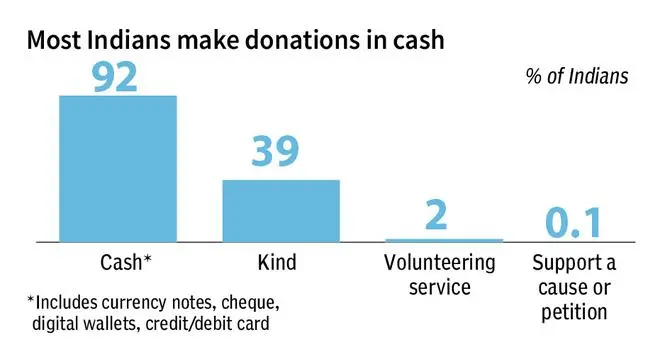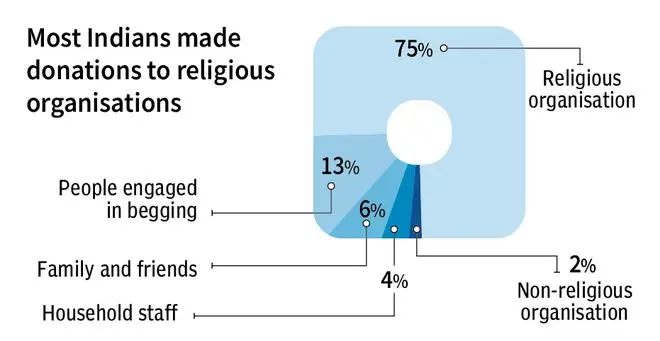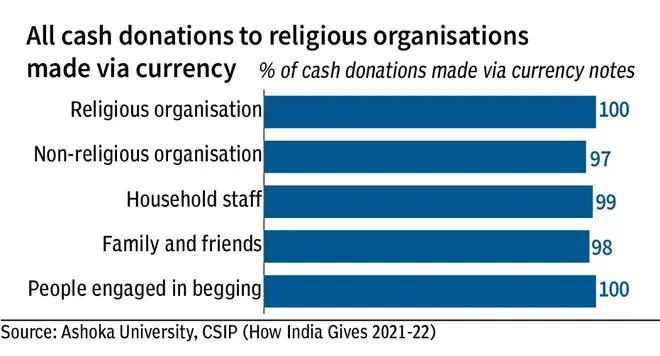Between October 2021 and September 2022, Indian households made donations worth ₹26,676 crore via currency notes. A major chunk of those donations went to religious organisations. This is according to the analysis of ‘How India Gives 2021-22’, a study conducted by the Centre for Social Impact and Philanthropy (CSIP) at Ashoka University, in collaboration with the Worldpanel Division of Kantar. As part of the study, 81,000 households across the country were surveyed.
It’s true that the popularity of UPI is growing by the day. But when it comes to donations, Indians still prefer to do it by cash. The amount of cash (including currency notes, digital wallets, cheques and credit and debit cards) donated between October 2021 and September 2022 was ₹27,000 crore. In the previous year, the corresponding amount was ₹23,700 crore.

In 2021-22, the average donation per household was ₹925. In 2020-21, it was ₹885. “The reason for the increase in the market size is not that more households donated in ‘cash’ but that cash donations were more generous this year,” the study notes.
Among the cash donations, close to 99 per cent were done via currency notes. Just 0.6 per cent of the total cash donations were made via digital wallets.


Most of the cash donations were made to religious organisations. “In the cash category, ‘religious organisations’ (98 per cent) bagged the highest share of giving. In the ‘in-kind’ category, ‘persons engaged in begging’ were the most preferred recipients at 52 per cent. Volunteering was one of the least-preferred forms of giving among households, varying between 1 per cent and 3 per cent for all recipient groups, followed by ‘supporting a cause or petition’, which varied between 0 per cent and 0.2 per cent,” notes the report.






